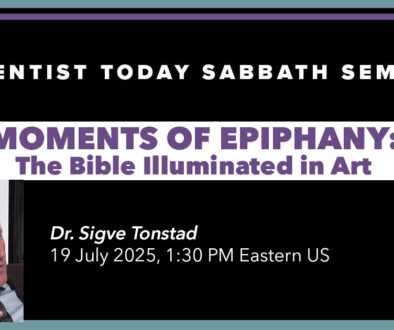Sharing Scripture for December 1 – 7
[symple_heading style=”” title=”Worshiping the Lord” type=”h1″ font_size=”40″ text_align=”center” margin_top=”0″ margin_bottom=”30″ color=”undefined” icon_left=”” icon_right=””]
This is a tool for you to use if you lead a Sabbath School (SS) class or small group. It is keyed to the Bible texts used in the current week’s Adult SS Lesson and includes a brief story from current news you can use to introduce the discussion and then a series of discussion questions in a relational pattern designed to build fellowship and spiritual reflection.
For use: Dec. 1 – 7
Texts: Nehemiah 12:27-47; 1 Chronicles 25:6-8; 1 John 1:7-9; John 1:29, 36; 1 Corinthians 5:7; Hebrews 9:1-11
“When it comes to music, Thanksgiving gets gypped.” [1]
So begins a recent online article from Colorado Springs’ The Gazette, titled “Thanksgiving music isn’t a thing, but what about music we’re thankful for?”
Amanda Hancock reflects, “Actually, when compared with the illustrious soundtracks of Christmas, it gets nothing.”
After Hancock peruses through a few pathetic efforts at music created for this late-November holiday, she suggests, “But none of those offerings captures the true meaning of the holiday. So perhaps there’s another way to look at Thanksgiving songs.” She then concludes, “As it turns out, songs that have nothing to do with the holiday can still have something to do with Thanksgiving.”
Although we have already passed the recent Thanksgiving holiday in the United States, this week’s Sabbath school lesson, “Worshiping the Lord,” is all about joyful thanks. We learn that the Israelites regularly celebrated events, feasts, dedications, and worship services with songs of thanksgiving.
If there was ever a story of thanksgiving in the Bible, it’s found in this week’s lesson. We learn that Nehemiah “brought the leaders of Judah up on the wall, and appointed two large thanksgiving choirs. One went to the right and the other choir went the other way…” (Nehemiah 12:31, 38). Eventually, after circling the city, the two groups met with leaders at the Temple. There, we read, “The singers sang loudly with Jezrahiah the director” (v. 42).
Not only was thanksgiving music an integral part of acknowledging appreciation to the Lord for the blessings bestowed on their nation, but care was given in orchestrating these events of gratitude. Levite singers were assigned to prepare and present music in worship. Some even cared for choir robes and others managed the musical instruments. This was no haphazard gathering in the backroom to quickly pick out a few hymns to sing a few minutes before the service.
In other words, music in Israelite worship was not intended for show. People didn’t come to the temple just to hear a concert and applaud at the end. It drew their hearts into worshiping the Creator God of heaven who offered to forgive sin and redeem people. In our focus on Ezra and Nehemiah’s accounts of God’s people returning to Jerusalem, we learn that part of the celebration of completing the temple, the gates and the walls was the process of purification.
It sounds like the perfect musical Thanksgiving tradition.
[symple_divider style=”solid” margin_top=”20″ margin_bottom=”10″]
Connecting: Share music traditions from your childhood. Did your family sing together for any events? What were they?
Sharing: Read Nehemiah 12:27–30. What elements from this passage could be applied to celebration events in the church (or in your own family) today?
- Music and worship can be part of any type of celebration: a new church, a new home, the birth of a child, etc.
- The Levites were organized to provide music for services. We should value the musicians in our church more and support their gifts.
- Worship was not limited to the spoken word in Israel’s services. There were “thanksgivings and singing, with cymbals and stringed instruments and harps” as well.
- Singers and musicians were carefully gathered and organized for services. Taking time to practice for worship events shows honor to God.
- An integral part of preparing to lead in worship is to “purify” oneself, i.e., make your heart right with God.
- Other…
Applying: Using what you’ve learned from this lesson, organize on paper a brief service of thanksgiving to the Lord. Include music, readings of thanksgiving, heart preparation, and pausing to dedicate people, rooms, and buildings to God’s service.
Valuing: Could it be that your own worship experience has been hampered because of a lack of your own heart preparation? Take time to pray with one other person, asking God to open your mind to have a heart of thanksgiving.
~ Curtis Rittenour




